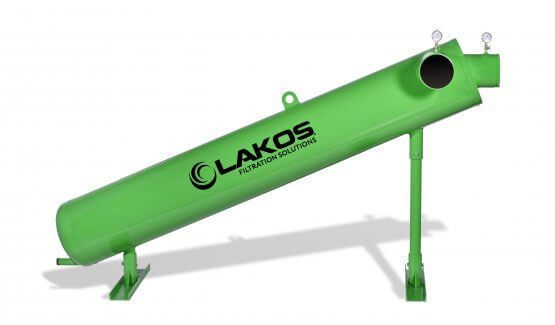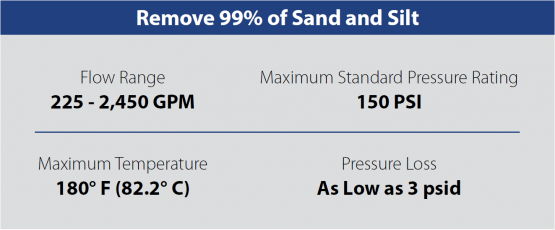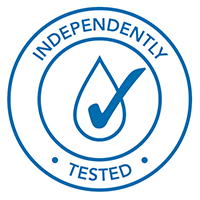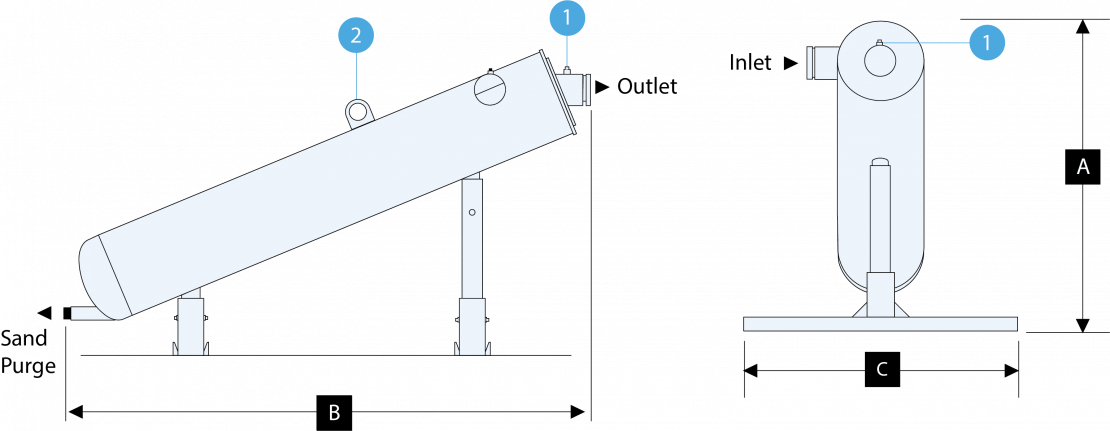
*LAKOS IHB Separators have been replaced with the LAKOS LGS Separators.

*LAKOS IHB Separators have been replaced with the LAKOS LGS Separators.


LGS Separators are uniquely engineered to remove settleable solids commonly found in Groundwater

Only LAKOS LGS Separators are independently tested by a 3rd party for filtration performance.

No screens, moving parts, discs, or fill media to replace or maintain.
| Models | Downloads | Flow Rates | Inlet/ Outlet Grooved Conn. |
Purge Size Male NPT |
Collection Chamber Capacity |
System Weight | |||
| US GPM | m3/hr | gal. | liters | lbs. | kg | ||||
| LGS-0225-L | DWG PDF | 225-500 | 51-114 | 4″ | 1-1/2″ | 3 | 11 | 299 | 136 |
| LGS-0385-L | DWG PDF | 385-850 | 88-193 | 6″ | 1-1/2″ | 5 | 18 | 446 | 202 |
| LGS-0750-L | DWG PDF | 750-1,450 | 170-330 | 8″ | 1-1/2″ | 12 | 45 | 785 | 356 |
| LGS-1150-L | DWG PDF | 1,150-2,450 | 261-556 | 10″ | 2″ | 14 | 59 | 1,311 | 595 |
Note:
1) Standard Profile for LGS is 22 1/2° low profile.
2) Standard inlet configuration is clockwise at 90°. Counter clockwise and other inlet configuration available on request.

| Models | Dim A | Dim B | Dim C | |||
| inches | mm | inches | mm | inches | mm | |
| LGS-0225-L | 39″ | 978 | 69″ | 1,753 | 40″ | 1,016 |
| LGS-0385-L | 48″ | 1,226 | 86″ | 2,172 | 40″ | 1,016 |
| LGS-0750-L | 64″ | 1,619 | 115″ | 2,915 | 40″ | 1,016 |
| LGS-1150-L | 84″ | 2,121 | 153″ | 3,874 | 40″ | 1,016 |
Answer: Flow rate is the most important factor in determining separator size because all LAKOS Separators operate within a prescribed flow range. Pipe size is not a factor in model selection so do not use your existing pipe size to determine the separator size. Required separator size is often, but not always, smaller than the existing piping, and appropriate hardware is used to match the inlet/outlet size with existing piping.
Answer: LAKOS factory-built purge controllers (ABV, ABV2, AKE, APP, AFS, EFS) do not have factory-set timings. The required purge frequency and durations vary depending on flow rates, solids concentrations, type of solids, etc. The controller time settings must be set at installation and LAKOS literature LS-608 can be used to help establish purge duration and frequency based on the application.
Answer: To determine the necessary purge frequency, purge often at first and calculate the proper rate based on the expected volume of separated solids. Purge duration should be long enough to evacuate the purge chamber AND clear the entire length of the purge piping of all solids. This is usually indicated by a change in the color of the purged liquid from dark to light. The time between purges should never exceed the time it takes to fill 1/3 of the collection chamber volume, based on the expected solids load and the separator’s purge collection volume, as indicated in the separator’s literature. Refer to LS-608 for additional information on calculating purge frequency and duration.
Answer: While there are many LAKOS Separators still in service after 15-25 years, there are many variables to the longevity of a LAKOS Separator. It can generally be expected to last as long as any other materials of similar construction in that system. Environment, fluid chemical make-up, flow, the material of construction, type of solids, and maintenance purging are all important factors to the life of a separator. It is important to consider all these factors when purchasing a separator. Providing LAKOS with details about your application will ensure your separator meets or exceeds the life expected through your purchase. Consult your LAKOS factory representative to obtain the life expectancy in your specific application.
Answer: LAKOS separators and sand filters are both designed to remove solids from liquids, but have advantages over each other depending on the application.
A separator is designed to remove solids with a specific gravity at least 1.5 times that of the carrying liquid. Separators require very little, if any, maintenance because they have no moving parts. The pressure loss across a separator is predictable and steady and only varies with flow rate. Separators require minimum liquid loss for the purging of collected solids, and can also be equipped with an optional solids recovery vessel that can eliminate liquid loss. However, separators do not generally help with liquid clarity (turbidity) and are ineffective on organic material, such as algae.
A sand media filter is designed to remove finer solids (down to 5 microns in size) with low specific gravities. Sand filters are used when finer filtration and liquid clarity (turbidity reduction) are a requirement. Sand filters do require more operational maintenance (more moving parts) and use more liquid for backwashing of the sand bed to remove the collected solids. Pressure loss across a media filter varies, as solids are collected and enter a backwash cycle when they reach a predetermined pressure loss. However, sand media filters are very efficient at removing a wide variety of light, organic solids.
LGS Groundwater Sand Separator
Answer: The maximum solids loading on LAKOS Separators is recommended to be less than 1% by volume. While 1% may seem low, keep in mind that 1% in a small 100 GPM system is 1 gallon of solids every minute, or 1,440 gallons (twenty-six 55-gallon drums) of solids per day. SMP Separators for residential use are not recommended to exceed 0.25% by volume. ILB Series Separators are not recommended to exceed 0.50% by volume. If your application exceeds these limitations, please consult your factory representative for proven alternatives.
Answer: Standard maximum pressure rating for most LAKOS Separators is 150 psi. The exceptions are the SMP Separators, which have a maximum pressure rating of 100 psi. Contact the factory for higher pressures; LAKOS can accommodate pressures up to 3000 psi through custom separators.